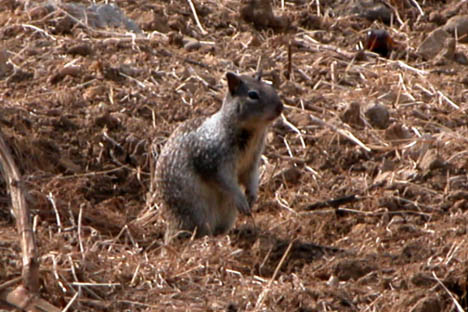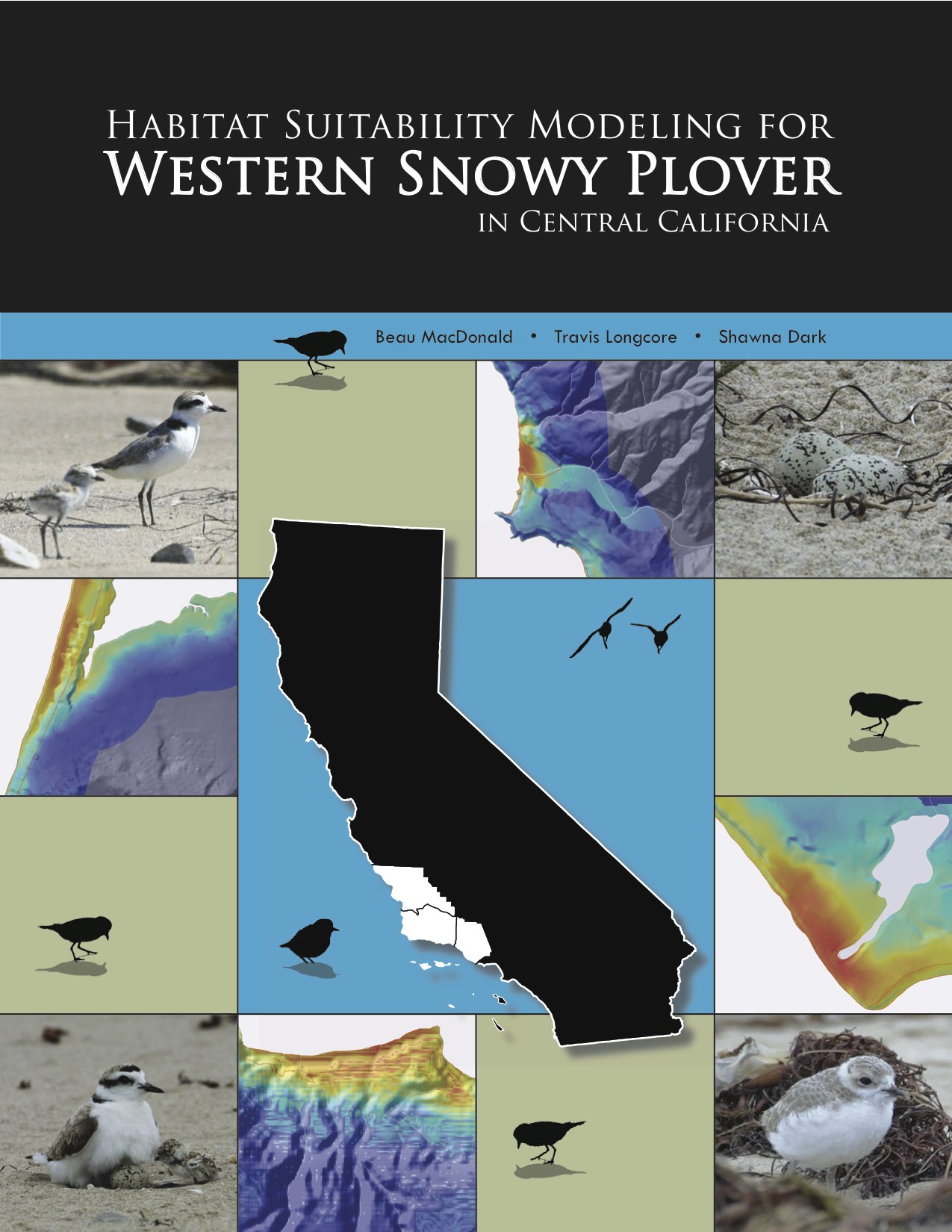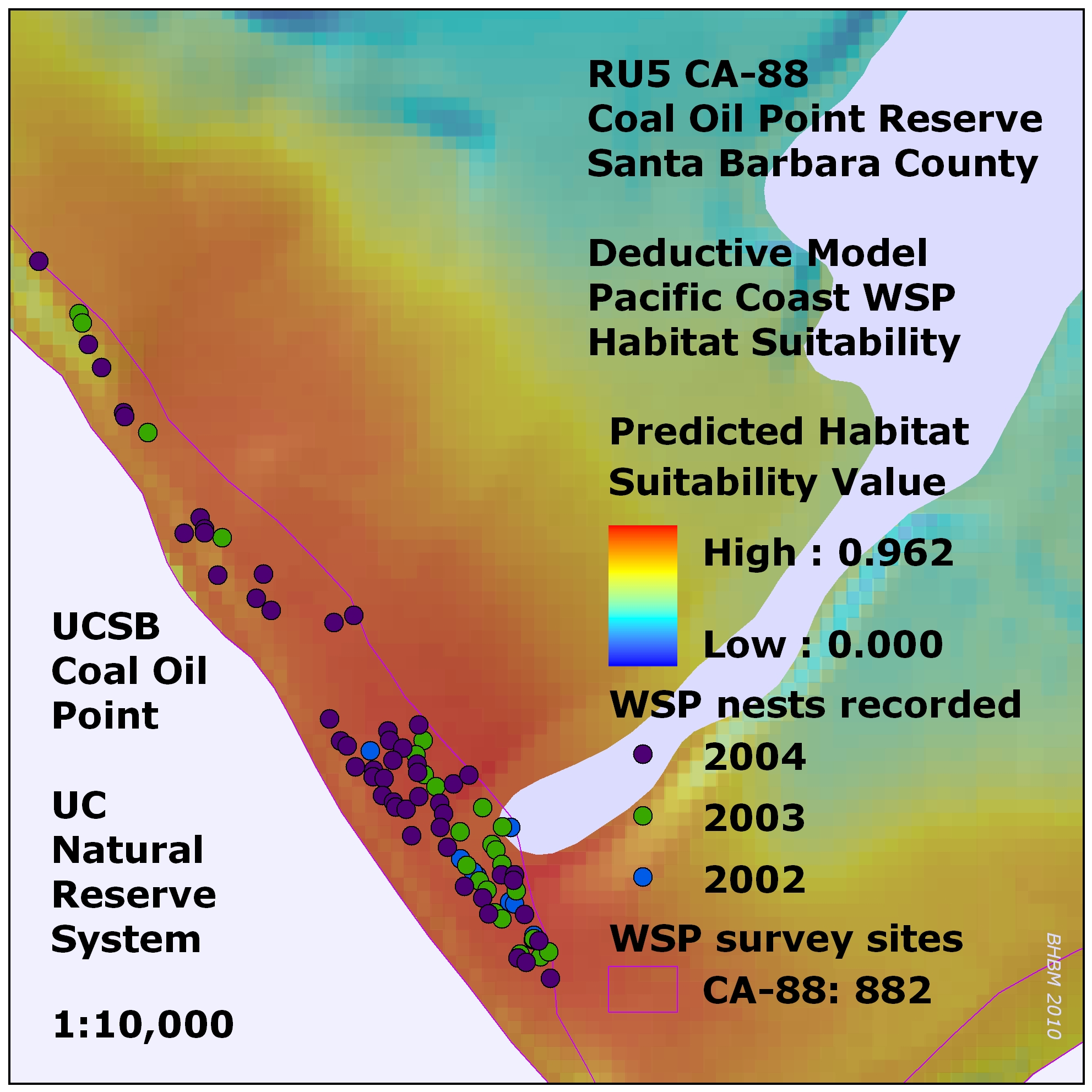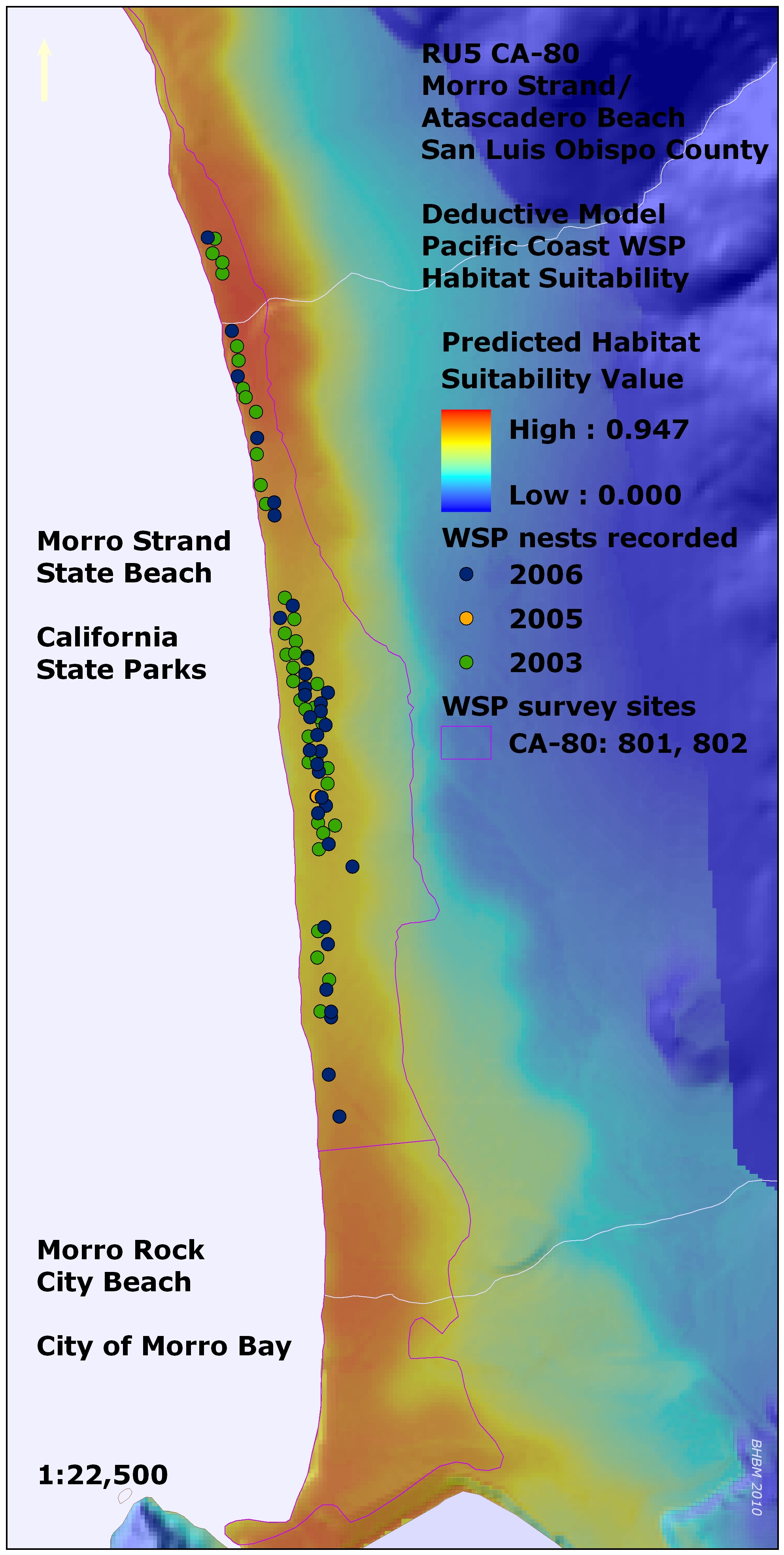|
The Urban Wildlands Group The Urban Wildlands Group is dedicated to the protection of species, habitats, and ecological processes in urban and urbanizing areas.
|
Western Snowy Plover: Status and Trends in Recovery Unit 5 |
|
The Urban Wildlands Group directed a collaborative research project on the status and trends of the federally endangered western snowy plover on the Central Coast of California (Recovery Unit 5). This research is funded by the Off-Highway Motor Vehichle Recreation Division of California State Parks. Project collaborators include westernsnowyplover.org, Dr. Cristina Sandoval at Coal Oil Point Reserve at UCSB, Dr. Shawna Dark and Beau MacDonald at CSUN, and Dr. William B. Kristan III at CSU San Marcos. The final report can be downloaded here (low resolution, 14 MB or high resolution 24 MB).
Habitat Suitability Modeling for Western Snowy Plover in Central California Beau MacDonald, Shawna Dark, and Travis Longcore Executive Summary The Pacific coast population of Western Snowy Plovers (Charadrius alexandrinus nivosus) is a federally listed threatened species, having experienced significant and pervasive population declines within its range in California, Oregon, and Washington. Recovery of the species depends on the effective use of management resources because human-associated disturbance is a key factor in reducing or eliminating nesting habitat. Within the large extensive tracts of potential habitat, managers must decide where to pursue conservation actions and weigh the benefits of those actions against the costs of implementation. Geographic Information Systems (GIS)-based predictive habitat modeling is an approach that can identify and rank nesting habitats for Western Snowy Plover. We implemented a series of habitat models for the central coast of California (Recovery Unit 5 in the U.S. Fish and Wildlife Service Recovery Plan for the species). Recovery Unit 5 (RU5) encompasses roughly 700 km of coastline in San Luis Obispo, Santa Barbara, and Ventura counties. It has remarkable geographic diversity, with predominantly west-facing beaches in San Luis Obispo County and south-facing beaches in much of Santa Barbara and Ventura Counties. The recovery unit also includes the northern California Channel Islands of San Miguel, Santa Rosa, Santa Cruz, Anacapa, Santa Barbara, and San Nicolas. An average of 1,000 Western Snowy Plovers nest in RU5, which is approximately half of the population of the Pacific Coast. A broad array of management actions is taken for Western Snowy Plover in RU5, ranging from nothing to intensive management. We took two approaches to develop habitat suitability models for Western Snowy Plover. The first is a deductive method, where environ- mental variables to predict habitat were selected based on the existing scientific literature and its description of the habitat preferences of the species. Such preferred habitat includes sand spits, dune-backed beaches, estuary and lagoon salt pans, beaches at creek and river mouths, bluff-backed beaches, dry salt ponds, and sand and gravel bars in rivers. Inductive models are built from species occur- rence data and the modeling procedure selects those environmental variables and their values that best predict existing occurrences to extrapolate to potential habitat. We used nest site data obtained from beach managers to run the Maxent model with the same environmental variables as our deductive models, while keeping some nest site data aside to check the accuracy of the predictions. Our deductive habitat models were also tested using nest site data and performed well. Beaches identified in the Recovery Plan as recovery sites encompassed high habitat suitability values as would be expected. For most beaches, our habitat suitability values for nest sites were statistically greater than at non-nest sites within recovery beaches. In instances where this was not true, a lack of management at high suitability value areas was the obvious and overwhelming explanation. For example, at Coal Oil Point in Santa Barbara County, which is intensively managed for Western Snowy Plovers, nest sites are concentrated in areas with high suitability values (Figure ES-1). By contrast, nest sites on the Morro Bay Strand in San Luis Obispo County are also found at some locations with high habitat suitability values, but are conspicuously absent from others (Figure ES-2). This reflects the different patterns of ownership and associated level of management.
FIGURE ES-1. Western Snowy Plover nest sites recorded at Coal Oil Point, Santa Barbara County. Nests are located at sites with higher habitat suitability values than sites without nests, even though lower value sites are also managed for plovers.
FIGURE ES-2. Western Snowy Plover nest sites recorded along Morro Strand. With uneven management effort, nest sites are located in high suitability sites within managed areas, but also within lower habitat suitability sites that are intensively managed. Sites without management, despite having high suitability values defined by physical variables in the model, are not used for nesting. |
home | people | links | contact
|






